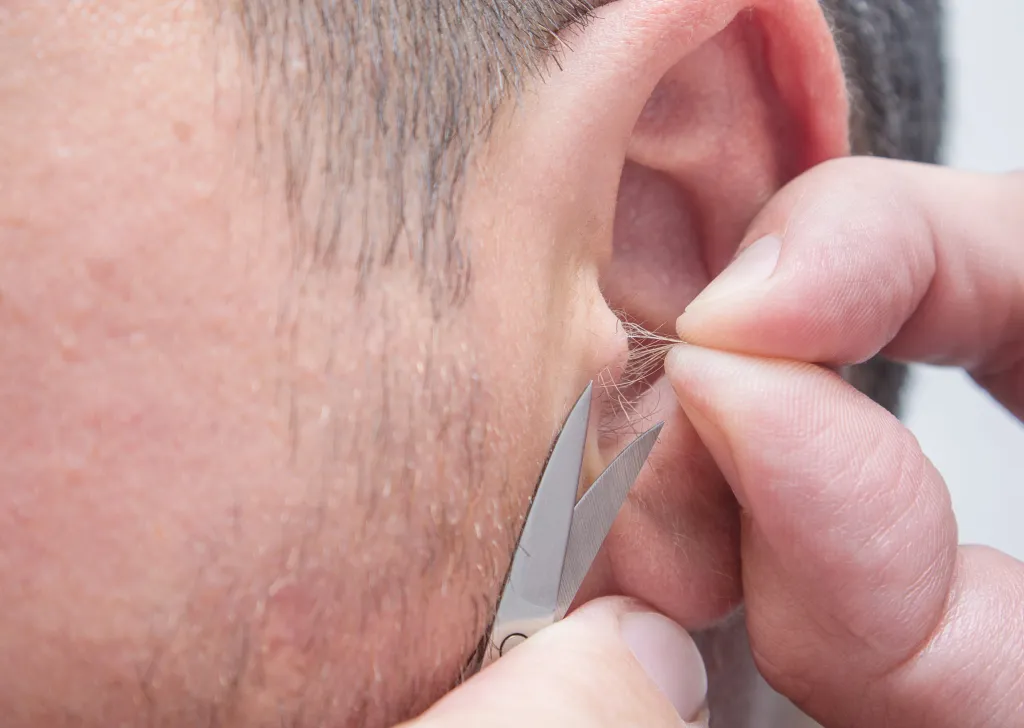Ear hair is something many people experience, especially as they age. While it may seem like an insignificant detail or simply a curious feature of the human body, it does exist for a reason. In this article, we’ll explore why these hairs appear, how they affect your health, and what you can do if you choose to control them.
What causes ear hair?
The appearance of ear hair is primarily related to hormonal and genetic factors. The hormone dihydrotestosterone (DHT) plays a key role in this phenomenon. As we age, DHT levels can increase in certain areas of the body, stimulating hair growth in areas where hair was previously absent or where it was finer and sparser.

Additionally, factors like genetics also play a role. If you have relatives who have ear hair, you’re more likely to develop it too.
Another relevant medical term is auricular hypertrichosis , a condition that causes excessive hair growth in the ear region. Although it’s more common in older men, it can also occur in younger people, especially those with a genetic predisposition. Auricular hypertrichosis is more common in certain ethnic groups, such as people of Indian origin, where it’s even considered a hereditary trait.
Is it dangerous to have hair in your ears?
In most cases, ear hair is completely harmless. In fact, these tiny hairs serve a protective function: they help prevent dust, insects, and other small particles from entering the ear canal. However, in some extreme cases, excessive hair can make proper hygiene difficult, which could increase the risk of infection.
Auricular hypertrichosis, on the other hand, does not represent a serious health problem, but it can have aesthetic implications that can be uncomfortable for those who suffer from it. It is important to differentiate between normal hair growth and situations that may require medical attention.
If you notice that the hair is accompanied by other symptoms, such as pain, discharge, or hearing loss, it is important to consult a health professional.
How to manage ear hair?
There are several ways to manage ear hair if you decide to remove it for aesthetic or comfort reasons. Some of the most common options include:
- Electric trimmers : Designed specifically for delicate areas like the ears, they are a quick and safe option.
- Laser hair removal : A more permanent solution, although it requires several sessions and must be performed by a professional.
- Wax or depilatory creams : Although effective, they should be used with caution to avoid irritation or damage to the sensitive skin of the ears.
Before choosing any method, consult a dermatologist or specialist to ensure you choose the best option for you.
Fun facts about ear hair
- In some cultures, ear hair is associated with wisdom or maturity.
- Studies suggest that increased hair growth in this area may be related to hormonal changes associated with aging.
In conclusion, although ear hair may seem like a minor detail, it has a biological basis and a protective function. While it’s not usually a cause for medical concern, knowing the causes and options for managing it can help you feel more comfortable and confident in your body.


